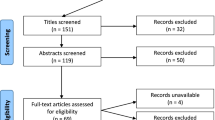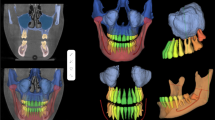Abstract
Purpose
This narrative review examines the evolving landscape of artificial intelligence (AI) integration in skull base surgery, exploring its multifaceted applications and impact on various aspects of patient care.
Methods
Extensive literature review was conducted to gather insights into the role of AI in skull base surgery. Key aspects such as diagnosis, image analysis, surgical planning, navigation, predictive analytics, clinical decision-making, postoperative care, rehabilitation, and virtual simulations were explored. Studies were sourced from PubMed using keyword search strategy for relevant headings, sub-headings and cross-referencing.
Results
AI enhances early diagnosis through diagnostic algorithms that guide investigations based on clinical and radiological data. AI-driven image analysis enables accurate segmentation of intricate structures and extraction of radiomics data, optimizing preoperative planning and predicting treatment response. In surgical planning, AI aids in identifying critical structures, leading to precise interventions. Real-time AI-based navigation offers adaptive guidance, enhancing surgical accuracy and safety. Predictive analytics empower risk assessment, treatment planning, and outcome prediction. AI-driven clinical decision support systems optimize resource allocation and support shared decision-making. Postoperative care benefits from AI’s monitoring capabilities and personalized rehabilitation protocols. Virtual simulations powered by AI expedite skill development and decision-making in complex procedures.
Conclusion
AI contributes to accurate diagnosis, surgical planning, navigation, predictive analysis, and postoperative care. Ethical considerations and data quality assurance are essential, ensuring responsible AI implementation. While AI serves as a valuable complement to clinical expertise, its potential to enhance decision-making, precision, and efficiency in skull base surgery is evident.
Similar content being viewed by others
Data Availability
All articles cited are available online.
References
Ahsan SF, Standring R, Osborn DA, Peterson E, Seidman M, Jain R (2015) Clinical predictors of abnormal magnetic resonance imaging findings in patients with asymmetric sensorineural hearing loss. JAMA Otolaryngol - Head Neck Surg 141(5):451–456. https://doi.org/10.1001/jamaoto.2015.142
Hepworth LR, Rowe FJ (2018) Programme choice for perimetry in neurological conditions (PoPiN): a systematic review of perimetry options and patterns of visual field loss. BMC Ophthalmol 18(1):241. https://doi.org/10.1186/s12886-018-0912-1
Bogowicz M, Riesterer O, Stark LS, Studer G, Unkelbach J, Guckenberger M et al (2017) Comparison of PET and CT radiomics for prediction of local Tumor control in head and neck squamous cell carcinoma. Acta Oncol (Madr) 56(11):1531–1536. https://doi.org/10.1080/0284186X.2017.1346382
Aerts HJWL, Velazquez ER, Leijenaar RTH, Parmar C, Grossmann P, Cavalho S et al (2014) Decoding tumour phenotype by noninvasive imaging using a quantitative radiomics approach. Nat Commun 5:4006. https://doi.org/10.1038/ncomms5006
Kickingereder P, Burth S, Wick A et al (2016) Radiomic Profiling of Glioblastoma: identifying an imaging predictor of patient survival with improved performance over established clinical and radiologic risk models. Radiology 280(3):880–889. https://doi.org/10.1148/radiol.2016160845
Zhu M, Li S, Kuang Y et al (2022) Artificial intelligence in the radiomic analysis of glioblastomas: a review, taxonomy, and perspective. Front Oncol 12:924245. https://doi.org/10.3389/fonc.2022.924245
Huang J, Habib AR, Mendis D et al (2020) An artificial intelligence algorithm that differentiates anterior ethmoidal artery location on sinus computed tomography scans. J Laryngol Otol 134(1):52–55. https://doi.org/10.1017/S0022215119002536
Neves CA, Tran ED, Blevins NH, Hwang PH (2021) Deep learning automated segmentation of middle skull-base structures for enhanced navigation. Int Forum Allergy Rhinol 11(12):1694–1697. https://doi.org/10.1002/alr.22856
Sekhar LN, Juric-Sekhar G, Qazi Z et al (2020) The future of Skull Base Surgery: a View through Tinted glasses. World Neurosurg 142:29–42. https://doi.org/10.1016/j.wneu.2020.06.172
Bardosi Z, Plattner C, Ozbek Y et al (2020) CIGuide: in situ augmented reality laser guidance. Int J Comput Assist Radiol Surg 15(1):49–57. https://doi.org/10.1007/s11548-019-02066-1
Pangal DJ, Kugener G, Shahrestani S, Attenello F, Zada G, Donoho DA (2021) A guide to annotation of Neurosurgical Intraoperative Video for Machine Learning Analysis and Computer Vision. World Neurosurg 150:26–30. https://doi.org/10.1016/j.wneu.2021.03.022
Yousefirizi F, Pierre Decazes, Amyar A, Ruan S, Saboury B, Rahmim A (2022) AI-Based detection, classification and Prediction/Prognosis in medical imaging:towards Radiophenomics. PET Clin 17(1):183–212. https://doi.org/10.1016/j.cpet.2021.09.010
Hollon T, Fredrickson V, Couldwell WT (2022) Extent of Resection Research in Skull Base Neurosurgery: previous studies and future directions. World Neurosurg 161:396–404. https://doi.org/10.1016/j.wneu.2021.10.184
Khanna O, Fathi Kazerooni A, Farrell CJ et al (2021) Machine learning using Multiparametric Magnetic Resonance Imaging Radiomic Feature Analysis to Predict Ki-67 in World Health Organization Grade I meningiomas. Neurosurgery 89(5):928–936. https://doi.org/10.1093/neuros/nyab307
Zhou H, Chang K, Bai HX et al (2019) Machine learning reveals multimodal MRI patterns predictive of isocitrate dehydrogenase and 1p/19q status in diffuse low- and high-grade gliomas. J Neurooncol 142(2):299–307. https://doi.org/10.1007/s11060-019-03096-0
Chang K, Beers AL, Bai HX et al (2019) Automatic assessment of glioma burden: a deep learning algorithm for fully automated volumetric and bidimensional measurement. Neuro Oncol 21(11):1412–1422. https://doi.org/10.1093/neuonc/noz106
Tang OY, Bajaj AI, Zhao K et al (2022) Association of Patient Frailty with Vestibular Schwannoma Resection Outcomes and Machine Learning Development of a vestibular Schwannoma risk stratification score. Neurosurgery 91(2):312–321. https://doi.org/10.1227/neu.0000000000001998
Jimenez AE, Porras JL, Azad TD et al (2022) Machine Learning models for Predicting Postoperative outcomes following Skull Base Meningioma Surgery. J Neurol Surg B Skull Base 83(6):635–645. https://doi.org/10.1055/a-1885-1447
Buchlak QD, Esmaili N, Leveque JC et al (2020) Machine learning applications to clinical decision support in neurosurgery: an artificial intelligence augmented systematic review. Neurosurg Rev 43(5):1235–1253. https://doi.org/10.1007/s10143-019-01163-8
AAbouzari M, Goshtasbi K, Sarna B et al (2020) Prediction of vestibular schwannoma recurrence using artificial neural network. Laryngoscope Investig Otolaryngol 5(2):278–285. https://doi.org/10.1002/lio2.362
Giordano C, Brennan M, Mohamed B, Rashidi P, Modave F, Tighe P (2021) Accessing Artificial Intelligence for clinical decision-making. Front Digit Health 3:645232. https://doi.org/10.3389/fdgth.2021.645232
Jiang C, Bhattacharya A, Linzey JR et al (2022) Rapid Automated Analysis of Skull Base Tumor Specimens Using Intraoperative Optical Imaging and Artificial Intelligence. Neurosurgery 90(6):758–767. https://doi.org/10.1227/neu.0000000000001929
Pangal DJ, Kugener G, Zhu Y et al (2022) Expert surgeons and deep learning models can predict the outcome of surgical Hemorrhage from 1 min of video. Sci Rep 12(1):8137. https://doi.org/10.1038/s41598-022-11549-2
Hidaka T, Tanaka K, Mori H (2023) Outcome evaluation using an artificial intelligence-based facial measurement software for facial nerve grafting in head and neck and skull base Surgery. Head Neck 45(6):1572–1580. https://doi.org/10.1002/hed.27374
Arambula AM, Bur AM (2020) Ethical considerations in the Advent of Artificial Intelligence in Otolaryngology. Otolaryngol Head Neck Surg 162(1):38–39. https://doi.org/10.1177/0194599819889686
Funding
None.
Author information
Authors and Affiliations
Corresponding author
Ethics declarations
Conflict of Interest
None.
Additional information
Publisher’s Note
Springer Nature remains neutral with regard to jurisdictional claims in published maps and institutional affiliations.
Rights and permissions
Springer Nature or its licensor (e.g. a society or other partner) holds exclusive rights to this article under a publishing agreement with the author(s) or other rightsholder(s); author self-archiving of the accepted manuscript version of this article is solely governed by the terms of such publishing agreement and applicable law.
About this article
Cite this article
Upreti, G. Advancements in Skull Base Surgery: Navigating Complex Challenges with Artificial Intelligence. Indian J Otolaryngol Head Neck Surg 76, 2184–2190 (2024). https://doi.org/10.1007/s12070-023-04415-8
Received:
Accepted:
Published:
Issue Date:
DOI: https://doi.org/10.1007/s12070-023-04415-8




